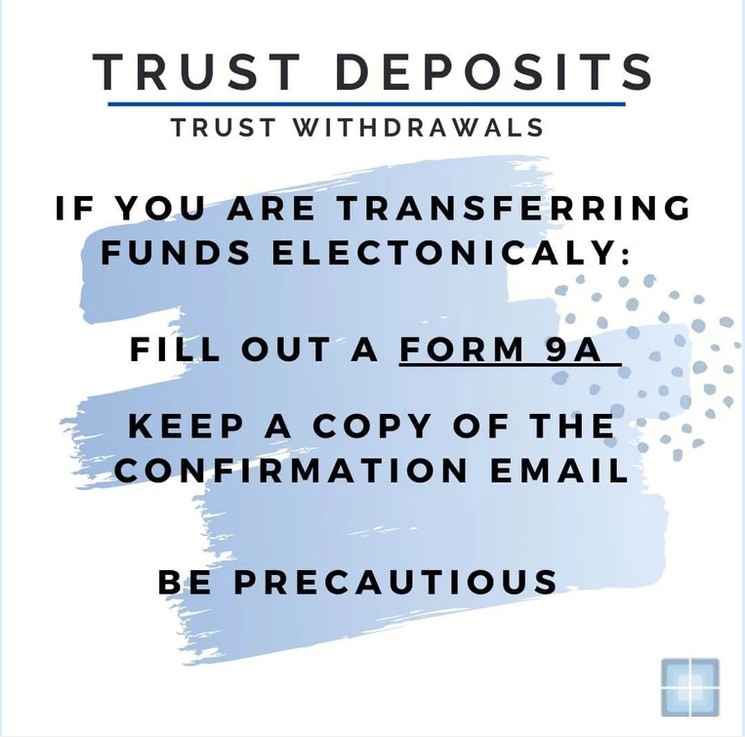During these times we have seen an increased amount of e-transfers, mobile deposits, and other lawyer initiated transfers etc. With the help of COVID, it is forcing every aspect of law firms to become automated. From virtual consultations to accepting and initiating e-transfers, times are quickly changing. Are you taking the proper measures to ensure your records are kept up to date?
Email transfers into a trust account have always been acceptable, but here is where it gets tricky. Email transferring a client’s trust funds out triggers the requirement of a form 9A. With increased e-transfers volumes, law firms need to ensure the authorized lawyer sign’s a complete form 9A’s. Missing this step or deciding to delay completing the form can be an ugly result in a spot audit. Spot audits have been paused due to COVID-19 but our feeling is that spot audits may increase once COVID is over.
Under these problematic circumstances, external or internal illegitimate activity may occur which can result in frequent spot audits for all law firms. For ease of reconciliation, the lawyer should note the client’s name, email address, reference number and method of payment (EFT/WIRE)

Below is Law Society’s suggestions on how to complete a Form 9A Virtually
- Print and sign. The lawyer or paralegal can control the entire electronic trust funds process by either completing the form online and printing it out for signature, or printing it out, filling it in and signing it. The rest of the electronic transfer is completed online, including receiving, printing, and completing the bank confirmation of the trust funds electronic transfer.
- Sign and scan. If there is more than one person involved in the electronic trust funds process and they are not working in the same location, then the lawyer or paralegal can complete the Form 9A, sign it, scan it, and email it to the person doing the entering and the second person doing the transfer. After the transfer has been done, the persons completing the entering and transferring can in turn scan and send the confirmation back to the licensee to check, sign, date and add the client name and file number. The original signed Form 9A and confirmation should be maintained.
- Use an electronic signature. If the lawyer or paralegal does not have access to a printer or scanner and is unable to sign the Form, then the use of an electronic signature to sign the Form 9A is permitted by the lawyer or paralegal. However, the use of lawyers or paralegals’ electronic signatures should not be delegated to a non-licensee, and lawyers and paralegals should be aware of the risks associated with electronic signatures.
Lawyers and paralegals should also implement strong access and security controls over the use of their electronic signatures, such as using a strong password and two-factor authentication.







